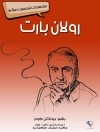Spenser is a delirious poet. He can’t plough straight. What he builds is shiftier, twistier, than anything dreamed up or put down by M. C. Escher.
So begins Resisting Allegory, in which the leading Spenser critic of our time sums up a lifelong commitment to the theory and practice of textual interpretation. Spenser’s great poem provides the occasion for a searching and comprehensive interdisciplinary exploration of reading practices¾those the author advocates as well as those he adapts or criticizes in entertaining a wide range of critical arguments with his celebrated combination of intellectual generosity and rigorous questioning.
Berger is interested in how details of the poem’s language—phrases, images, figures on which we haven’t put enough interpretive pressure—disconcert traditional interpretations and big discourses that the poem has often been thought to serve. Central to this volume is an attention to the deployment of gender in conjunction with the Berger’s notion of narrative complicity.
Resisting Allegory offers a model of theoretically sophisticated criticism that never wavers in its close attention to the text. Berger offers a sustained and brilliantly articulated resistance not only to allegory, as the title indicates, but also to prevalent modes of cultural and historical criticism. As in all of Berger’s books, a lucid reflection on questions of method—based on a profound and richly theoretically informed understanding of the workings of language and of the historical situations of the people involved in it—are interwoven with an interpretive practice that serves as an exemplary pedagogical model. Berger attends to historical and political context while deeply respecting the ways in which text can never be reduced to context.
This distinctive and original book makes clear the scope and coherence of the critical vision elaborated Berger has elaborated in a lifetime of seminal and still-challenging critical arguments.
Tabla de materias
Editor’s Introduction | vii
Introduction : On Texts and Countertexts | 1
Book One: The Legend of Holinesse
1. Displacing Autophobia in The Faerie Queene,
Book 1: Ethics, Gender, and Oppositional Reading
in the Spenserian Text | 17
Book Two: The Legend of Temperaunce
2. Narrative as Rhetoric in The Faerie Queene | 103
3. Wring Out the Old: Squeezing the Text, 1951–2001 | 143
Book Three: The Legend of Chastity
4. Resisting Translation: Britomart in Book 3 of
Spenser’s Faerie Queene | 173
5. Actaeon at the Hinder Gate: The Stag Party
in Spenser’s Gardens of Adonis | 211
Acknowledgments | 245
Notes | 247
Index | 289
Sobre el autor
David Lee Miller is Carolina Distinguished Professor Emeritus of English and Comparative Literature at the University of South Carolina. He is the author of Dreams of the Burning Child: Sacrifiial Sons and the Father’s Witness (Cornell, 2003) and The Poem’s Two Bodies: The Poetics of the 1590 Faerie Queene (Princeton, 1988).












